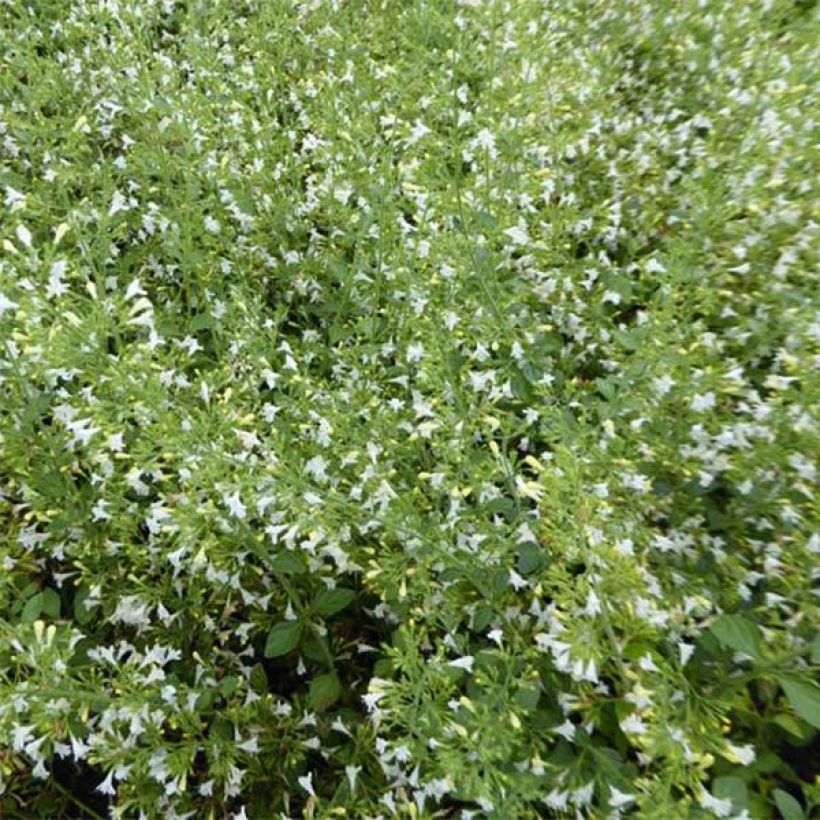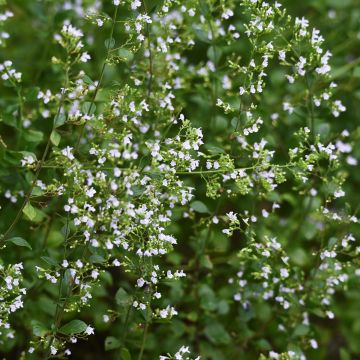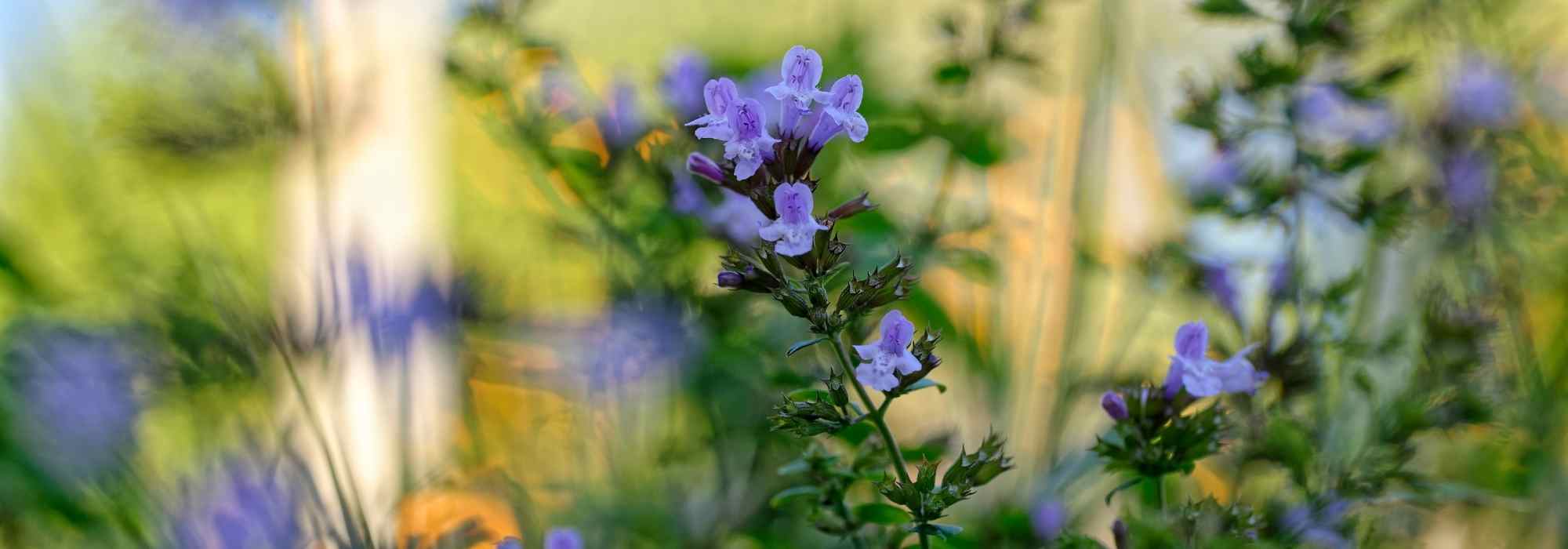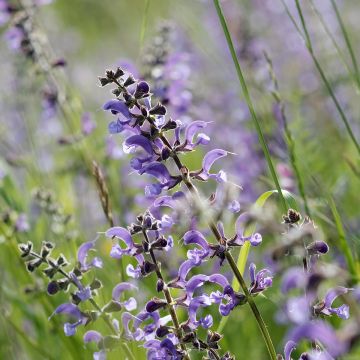

Calamintha nepeta Weisse Riese - Calamint
Calamintha nepeta Weisse Riese - Calamint
Calamintha nepeta Weisser Riese
Lesser Calamint, Nettle-leaved Calamint
A packaging and delivery feat, in the midst of the coronavirus, with the post 3 days/week, the pennyroyal plant arrived in great shape after 7 days for delivery, thank you!
Maure, 08/04/2020
Special offer!
Receive a €20 voucher for any order over €90 (excluding delivery costs, credit notes, and plastic-free options)!
1- Add your favorite plants to your cart.
2- Once you have reached €90, confirm your order (you can even choose the delivery date!).
3- As soon as your order is shipped, you will receive an email containing your voucher code, valid for 3 months (90 days).
Your voucher is unique and can only be used once, for any order with a minimum value of €20, excluding delivery costs.
Can be combined with other current offers, non-divisible and non-refundable.
Home or relay delivery (depending on size and destination)
Schedule delivery date,
and select date in basket
This plant carries a 12 months recovery warranty
More information
We guarantee the quality of our plants for a full growing cycle, and will replace at our expense any plant that fails to recover under normal climatic and planting conditions.

Would this plant suit my garden?
Set up your Plantfit profile →
Description
Calamintha nepeta 'Weisse Riese' is a small, versatile and undemanding perennial for dry and sunny areas. It produces numerous spikes of tiny white flowers that form a mist above its foliage, from late spring to autumn. Only summer heat and drought temper its generous flowering. Its small, fuzzy, semi-evergreen leaves release a powerful scent of mint mixed with tar when crushed. This plant is beautiful in borders, on a dry stone wall or in containers.
Native to southern Europe and North Africa, Calamintha nepeta is a small rhizomatous plant similar to mint, that is very hardy and drought-tolerant and belongs to the family of Lamiaceae. Its natural environment is dry, rocky places in the mountains, on limestone soil. The 'Weisse Riese' variety has managed to retain the robust character of this fearless little perennial while enhancing it with a more spectacular and longer flowering period. It forms a small bushy clump of 40 to 50 cm (16 to 20in) in all directions when in bloom. Its spikes bear tiny white flowers with a delicate minty fragrance that appear from July to October, sometimes as early as June in mild climates. When care is taken to remove faded flowers, the flowering continues until October, with a brief pause during hot and very dry summers. The foliage consists of small, fuzzy, slightly toothed, greyish-green, oval leaves, loaded with a refreshingly fragrant essential oil.
Calamintha nepeta 'Weisser Riese' is very hardy when grown in dry, sandy or limestone soil, and pleasantly perfumes the garden when planted near a pathway, a stepping stone, or an alley, where it freely self-seeds. On a hot day, its foliage releases a unique scent when gently crushed, reminiscent of the Mediterranean. In a dry garden or on a wall, it can accompany dwarf artemisias, Ceratostigma plumbaginoides, thrifts, thyme, or trailing rosemary. In humid regions with heavy soil, it can be planted in a large rockery, a scree garden, paving, or on a well-exposed slope, in front of taller perennials such as mulleins or shrubby salvias.
Calamintha nepeta Weisse Riese - Calamint in pictures




Flowering
Foliage
Plant habit
Botanical data
Calamintha
nepeta
Weisser Riese
Lamiaceae
Lesser Calamint, Nettle-leaved Calamint
Cultivar or hybrid
Other Calamintha
View all →Planting and care
Calamintha nepeta enjoys the sun and will be hardier in well-drained, rocky or sandy soils, even poor and limestone soils. It fears heavy soils which are waterlogged in winter. It can be planted on a slope, in a rockery or along a pathway, in full sun, in spring (in cold regions) or autumn (preferably summer in hot and dry regions).
Planting period
Intended location
Care
Planting & care advice
-
, onOrder confirmed
Reply from on Promesse de fleurs
Similar products
Haven't found what you were looking for?
Hardiness is the lowest winter temperature a plant can endure without suffering serious damage or even dying. However, hardiness is affected by location (a sheltered area, such as a patio), protection (winter cover) and soil type (hardiness is improved by well-drained soil).

Photo Sharing Terms & Conditions
In order to encourage gardeners to interact and share their experiences, Promesse de fleurs offers various media enabling content to be uploaded onto its Site - in particular via the ‘Photo sharing’ module.
The User agrees to refrain from:
- Posting any content that is illegal, prejudicial, insulting, racist, inciteful to hatred, revisionist, contrary to public decency, that infringes on privacy or on the privacy rights of third parties, in particular the publicity rights of persons and goods, intellectual property rights, or the right to privacy.
- Submitting content on behalf of a third party;
- Impersonate the identity of a third party and/or publish any personal information about a third party;
In general, the User undertakes to refrain from any unethical behaviour.
All Content (in particular text, comments, files, images, photos, videos, creative works, etc.), which may be subject to property or intellectual property rights, image or other private rights, shall remain the property of the User, subject to the limited rights granted by the terms of the licence granted by Promesse de fleurs as stated below. Users are at liberty to publish or not to publish such Content on the Site, notably via the ‘Photo Sharing’ facility, and accept that this Content shall be made public and freely accessible, notably on the Internet.
Users further acknowledge, undertake to have ,and guarantee that they hold all necessary rights and permissions to publish such material on the Site, in particular with regard to the legislation in force pertaining to any privacy, property, intellectual property, image, or contractual rights, or rights of any other nature. By publishing such Content on the Site, Users acknowledge accepting full liability as publishers of the Content within the meaning of the law, and grant Promesse de fleurs, free of charge, an inclusive, worldwide licence for the said Content for the entire duration of its publication, including all reproduction, representation, up/downloading, displaying, performing, transmission, and storage rights.
Users also grant permission for their name to be linked to the Content and accept that this link may not always be made available.
By engaging in posting material, Users consent to their Content becoming automatically accessible on the Internet, in particular on other sites and/or blogs and/or web pages of the Promesse de fleurs site, including in particular social pages and the Promesse de fleurs catalogue.
Users may secure the removal of entrusted content free of charge by issuing a simple request via our contact form.
The flowering period indicated on our website applies to countries and regions located in USDA zone 8 (France, the United Kingdom, Ireland, the Netherlands, etc.)
It will vary according to where you live:
- In zones 9 to 10 (Italy, Spain, Greece, etc.), flowering will occur about 2 to 4 weeks earlier.
- In zones 6 to 7 (Germany, Poland, Slovenia, and lower mountainous regions), flowering will be delayed by 2 to 3 weeks.
- In zone 5 (Central Europe, Scandinavia), blooming will be delayed by 3 to 5 weeks.
In temperate climates, pruning of spring-flowering shrubs (forsythia, spireas, etc.) should be done just after flowering.
Pruning of summer-flowering shrubs (Indian Lilac, Perovskia, etc.) can be done in winter or spring.
In cold regions as well as with frost-sensitive plants, avoid pruning too early when severe frosts may still occur.
The planting period indicated on our website applies to countries and regions located in USDA zone 8 (France, United Kingdom, Ireland, Netherlands).
It will vary according to where you live:
- In Mediterranean zones (Marseille, Madrid, Milan, etc.), autumn and winter are the best planting periods.
- In continental zones (Strasbourg, Munich, Vienna, etc.), delay planting by 2 to 3 weeks in spring and bring it forward by 2 to 4 weeks in autumn.
- In mountainous regions (the Alps, Pyrenees, Carpathians, etc.), it is best to plant in late spring (May-June) or late summer (August-September).
The harvesting period indicated on our website applies to countries and regions in USDA zone 8 (France, England, Ireland, the Netherlands).
In colder areas (Scandinavia, Poland, Austria...) fruit and vegetable harvests are likely to be delayed by 3-4 weeks.
In warmer areas (Italy, Spain, Greece, etc.), harvesting will probably take place earlier, depending on weather conditions.
The sowing periods indicated on our website apply to countries and regions within USDA Zone 8 (France, UK, Ireland, Netherlands).
In colder areas (Scandinavia, Poland, Austria...), delay any outdoor sowing by 3-4 weeks, or sow under glass.
In warmer climes (Italy, Spain, Greece, etc.), bring outdoor sowing forward by a few weeks.























































